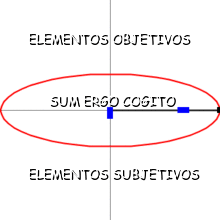Nosotros aprovechamos la explicación oficial
por la gran significación que implicaba
su "metáfora socio-política",
y la aprovechamos estratégicamente en éste sentido,
pero siempre, como buenos estudiantes
de la "Filosofía de la Sospecha" de Paul Ricoeur,
con la mosca detrás de la oreja .
Mosca que ahora, Gordon Duff,
le da alas para que vuele...

Hacked: Did You Really Think Cockpit Door Was Locked?
In the interest of humiliating the lying press
By Gordon Duff and Jeff Smith, Editors
In all likelihood, the cabin crew of the ill fated GermanWings flight could simply have entered the cockpit at any time.
If the plane were programmed specially to disallow this normal capability of the Airbus320 series, the airline has failed to inform the public of this.
This information is “confidential” as it would be a theoretical aid to hijackers. Problem is, there are no hijackers, only security agencies that seem to enjoy stealing planes, shooting them down or taking control of their guidance systems.
The hijack scenario makes for good TV and convenient cover stories where “dead men tell no tales” and crash scenes are always quickly secured and “seeded” as needed.
Our suicide story is just a new twist on an old tale.
In order to add to the explosion of information about the recent air event over France, we have done some simple research on the operation of the cockpit door of an A320.
We have published, below, the operations manual. We also have the following language, taken from the flight crew manual used by Royal Jordanian Airlines, an organization kind enough to have passed this on:
Ident.: DSC-25-11-10-00001006.0001001 / 09 OCT 12
Applicable to: MSN 2649-3685, 4670-5367
A forward-opening hinge door separates the cockpit from the passenger compartment. It has three electric locking strikes, controlled by the flight crew. In normal conditions, when the door is closed, they remain locked. When there is a request to enter the cockpit, the flight crew can authorize entry by unlocking the door, that remains closed until it is pushed open.When the flight crew does not respond to requests for entry, the door can also be unlocked by the cabin crew, by entering a two to seven-digit code (programmed by the airline) on the keypad, installed on the lateral side of the Forward Attendant Panel (FAP).
Scribd Server Hacked and Crashed
The minute we posted the operating plans of for the A320 cockpit door on Scribd, the site was hacked and crashed. This is a screenshot showing the hack:
(.....................)
There are additional questions as to the possibility of a time delay that could disable the keypad, one that can be programmed by the airline itself but it not required and totally optional.
This would mean that it is likely, based on the level of informality at Germanwings, no delay was programmed into the keypad.
This would mean that the cabin crew, by this we mean flight attendants, would have the entry code for the cockpit and would most likely be able to enter at will even if the door were in the lock position.
There is a reason we are publishing this, information that previously was not allowed to be in public hands:
The moment, over 24 hours ago, it was mentioned that the “pilot” was “pounding and screaming,” in an attempt to enter the cockpit, this information became of vital public interest.
Additionally, as soon as the false information was released that air controllers were unable to contact the crew of the plane, it should have been mentioned that crew members have satellite phones available.
Rather than pounding on a door, the pilot might well have been on the phone asking NORAD to land the plane for him.
These phones are usually in each of the crew areas, fore and aft galleys and often sitting out in the open. A reference is made in this aero-medical flight manual:
Diagnosis
For anything other than a very minor medical complaint, the Purser or In-Charge Flight Attendant will normally make a PA announcement asking if there is a doctor or other qualified medical professional (nurse, paramedic etc) on board. If there is a positive response, the medical professional will be asked to assess the patient and to advise the crew of the best course of action.
In the absence of a medical professional (or as a concurrent protocol), many air carriers have a standing arrangement with emergency medical service providers such as Med Link, Stat MD or Med Aire. These service providers can be used both pre-flight and in-flight and can be contacted via satellite phone, high frequency (HF) or very high frequency (VHR) radio phone patch through an ARINC station or by means of Aircraft Communications, Addressing and Reporting System (ACARS) equipment.
By one of these methods, direct communication with an emergency room/trauma centre physician is possible.
Anti-Hijack System
Again, we mention the same thing we brought up during the disappearance of MH370: Modern “fly by wire” planes have, for years, had auto-land systems onboard that are in place to keep planes from being hijacked and crashed into nuclear power plants. We are told the planes can land using this system in winds up to 30 knots.
We also know that a controlled crash in an area that would cause minimal collateral damage is the second course of events this system is programmed for.
With stories about depression and girl friends being pushed onto the public and very little salient information being given out, information which as usual inexorably leads to unpleasant answers, we have decided to broaden the debate.
All reporting, which for awhile seemed almost rational to a point, has been replaced by agenda driven lies and cover stories. It has begun again.
http://www.veteranstoday.com/2015/03/27/350535/









































































































































































































































































































































































































































